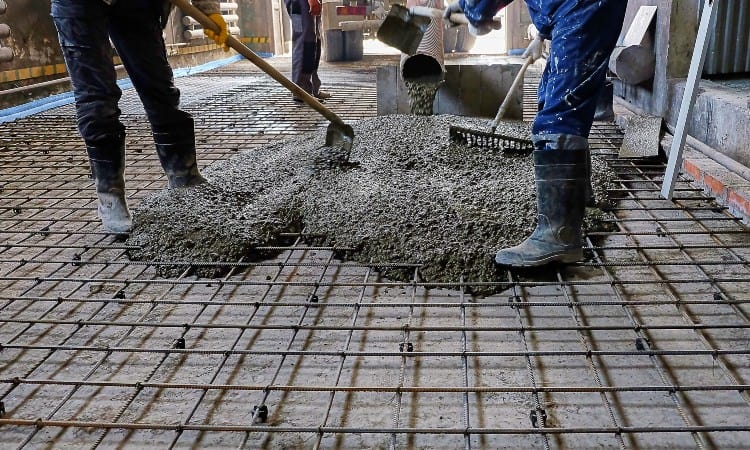Concrete is an extremely flexible construction material that can be utilized in numerous ways. From hand application, pouring, pumping, spraying and grouting applications to create structures able to withstand heavy loads and extreme weather conditions.
Plain concrete, which does not contain reinforcement, is commonly used for building pavements and structures that don’t need high tensile strength. The mix design – comprising essential constituents such as Portland cement – for these projects depends upon what they require of it.
It’s Strong
Concrete slabs Melbourne is an extremely strong building material, making it perfect for construction of various structures. It can withstand almost any amount of pressure without suffering damage from extreme weather or disasters caused by man.
Corten steel offers excellent abrasion resistance and corrosion protection, making it a good choice for construction roads and highways that will be subject to heavy traffic loads.
Concrete can be manufactured using various admixtures designed to enhance its properties, such as accelerators to speed up setting time, retarders to reduce it, and superplasticizers that lower water content.
It’s Durable
Concrete has long been used in building traditional and modern structures alike due to its versatility, long service life and ease of reconstruction compared to many other building materials.
Concrete has the strength to withstand extreme weather conditions and severe impacts caused by jet planes. Furthermore, its surface resists corrosion caused by water or chemicals used in its manufacture.
Waste concrete can be recycled to produce new concrete by mixing cement clinker, aggregates and water together in the appropriate proportions. The recycling process can be speeded up with accelerators, retarders or superplasticisers. Also used tyres can help increase ductility and strength to produce long-lasting, cost-effective and eco-friendly concrete materials that last a long time.
It’s Recyclable
Concrete recycling helps construction companies reduce waste generated during construction. By using less materials and saving costs, as well as forgoing landfill levies altogether, recycling helps lower environmental impact and decrease construction waste significantly.
Concrete has the capacity to withstand high temperatures without easily burning and doesn’t release volatile organic compounds that could harm the environment.
Recycling concrete begins with industrial crushing equipment consisting of jaws and impactors to break up the material into smaller chunks, followed by screening to remove dirt, metal reinforcements and any other elements which might compromise its structural integrity.
It’s Affordable
Concrete is more cost-effective than other building materials at initial construction stage costs and over its lifecycle due to lower energy and maintenance expenses and use of less fossil fuels for production. Furthermore, its reduced waste generation reduces building site waste production while it requires fewer fossil fuels for its manufacture.
Concrete makes use of recycled materials and industrial wastes that can replace aggregate material, decreasing our reliance on primary raw materials. Furthermore, its fireproof qualities and noncombustibility make it the optimal choice for residential buildings located in areas susceptible to wildfire.
Concrete is an effective insulator and can help regulate interior temperatures to save on cooling costs during summer and heating costs during winter. Furthermore, its sound-absorbing qualities reduce noise levels for a more peaceful living experience.
It’s Flexible
Concrete’s versatility as a landscaping material lies in its moldability when wet, making it ideal for creating structures such as retaining walls. Furthermore, it can be poured, pumped or shot into place to form garden ornaments like gnomes, water fountains or statues.
Concrete has an extremely high melting point, meaning it can withstand extreme temperatures without melting down, as well as being an effective heat insulator and helping prevent fires from spreading in buildings made of wooden or steel. Thus, people living in buildings made of concrete have much higher chances of survival during a fire than those residing in wooden or steel structures.
Concrete offers sound dampening and vibration control which is crucial in hospitals, helping patients recover better and relieving strain on surgeons performing delicate operations.
It’s Easy to Work With
Concrete can be applied by hand, poured into molds or spray painted. Its composition includes aggregates like sand and gravel mixed with cement to produce various structures.
Fogging may also be done to increase humidity above the concrete slab and facilitate curing. A dike made of either earth or sand should enclose and keep damp concrete slab for curing, while fogging may help increase humidity above it.
Insulating concrete can significantly cut energy costs. When combined with air entrainment technology, concrete buildings and highways can reduce pollution levels up to 40% while being resistant to fire and water. Insulated concrete buildings and highways also allow heavy loads to be carried safely without rutting.


